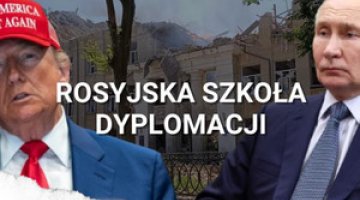The EU’s new sanctions against Russia: tighter restrictions, a ban on re-exporting LNG
On 24 June, the European Union adopted its 14th package of sanctions against the Russian Federation, which covers a number of areas including trade, transport and finances. The document imposes individual restrictions on 69 individuals and 47 companies from Russia, as well as trade restrictions on 61 entities from the Russian Federation and third countries that have been identified as having links to the Russian arms sector. It also places restrictions on exports of more so-called dual-use goods (including microwave & antenna amplifiers and quads), and extends the ban on exports to Russia to include selected industrial and chemical products, vehicle parts, machinery equipment and plastics. It also bans exports of manganese ore to Russia and imports of helium from this country.
The EU has also strengthened its measures to prevent any circumvention of the existing restrictions. Firstly, EU-based companies have been obliged to undertake their best efforts to ensure that their foreign subsidiaries are not involved in any violations of the sanctions regime. Secondly, the ‘no Russia clause’ has been extended to cover the transfer of intellectual property rights on products included in the list of the so-called dual-use goods and high technology (the so-called common high priority, CHP). EU-based entities and their subsidiaries are now obliged to make efforts to prevent such items from being exported to Russia. The package also formally prohibits political parties, NGOs and the media from accepting money from the Russian state and its representatives.
The package also imposes transport restrictions: most notably, it blocks access to EU ports and bans EU-based entities from providing services for vessels that “contribute to Russia’s ability to wage war against Ukraine.” This includes transporting military equipment to Russia, exporting stolen grain from Ukraine, shipping technological components for the Russian LNG sector and providing other forms of support to the development and operations of the Russian energy industry, among others. The restrictions also apply to tankers that carry Russian oil and fuels while engaging in practices that are inconsistent with international shipping standards (concealing the origin of crude through trans-shipping on the high seas, disabling transponders, falsifying documentation). The EU has banned 27 vessels under this rule and has pledged to update this list regularly. The new sanctions in the area of air and road transport include a ban on charter flights carried out by EU-based operators and on EU territory for Russian nationals and companies, as well as those where a Russian individual or company decides on the point of departure and landing (for example, for holiday or business purposes); stricter rules will apply to road transport within the EU involving goods from companies which are 25 percent or more owned by Russian nationals or businesses.
The EU has also targeted Russia’s LNG sector by prohibiting the re-export and trans-shipment of Russian-origin LNG within the EU’s territory. This provision applies to side-to-side trans-shipments within and outside EU ports and to the offloading of LNG into tanks at terminals for subsequent resale. Implementing this restriction will take nine months: it will come into force on 26 March 2025 for contracts concluded before 25 June this year. Until now, around 20% of the EU’s total annual imports of Russian LNG have been re-exported to third countries in this way (in 2023, the EU’s re-exports of LNG from Russia totalled more than 4 bcm). The EU has also banned domestic entities from investing in the Russian LNG sector and from providing services to this industry.
As part of its financial sanctions, Brussels has banned EU-based banks from using Russia’s SPFS system (the equivalent of SWIFT) and from conducting transactions with non-EU banks and crypto assets providers that act as intermediaries in transactions supporting Russia’s defence-industrial complex. Moreover, the EU has raised the possibility of creating a list of third-country banks that use SPFS; it has also announced that they will be banned from doing business with EU entities.
Commentary
- The latest package shows that the EU is following the path of tightening the existing provisions on sanctions, while nevertheless being aware that it has little room for manoeuvre in terms of introducing new systemic solutions. In particular, this trend can be seen in the decision to expand trade restrictions related to the control of exports of so-called ‘dual-use’ goods to Russia, and to impose restrictions on third-country entities in order to improve oversight and prevent any circumvention of the sanctions regime. At the same time, the restrictions imposed on Russian LNG remain limited due to a lack of political will and broad consensus among the EU member states. The solution adopted, a ban on re-exporting liquefied gas at EU ports, is a compromise between two opposing stances: that of the member states which have been calling for a full embargo on Russian LNG (which accounted for c. 14% of the EU’s total LNG imports in 2023) and that of those which have opposed this, primarily due to concerns about the stability of gas supplies and prices. The fact that LNG imports from Russia have continued, despite the EU’s repeated pledges that it would completely phase out gas purchases from Russia by 2027, represents a political defeat for Brussels. Therefore, we should interpret the re-export ban as an attempt to partially break the deadlock, and also as a way of addressing the reservations that European companies have formulated against this policy.
- It should be noted that the introduction of this ban marks the first time that the EU has imposed a restriction directly targeting Russian gas exports, and by extension, Russia’s budget revenues from them. The new restrictions will primarily affect Novatek, a company which carries out exports from its major Yamal LNG plant with a nominal production capacity of 17.4 million tonnes/year. The EU’s blockade of re-export options will complicate and lengthen Russia’s logistical routes as EU terminals have hitherto facilitated the export of liquefied gas in winter, including to Asian markets. For most of the year only ice-class vessels, whose supply is limited, can sail to the LNG facilities located in northern Russia. If it becomes impossible to call at EU ports, methane carriers capable of crushing ice cover will have to carry out more frequent side-to-side trans-shipments on the high seas, which are complex operations to carry out in the case of this fuel. This in turn raises questions about the extent to which owners of gas carriers will be willing to accept the accompanying risks. Paradoxically, as a result of the re-export ban, Russia’s share of the EU’s LNG imports may increase during the next winter period. If Russia no longer has any trans-shipment options at EU ports, it will most likely have to keep additional volumes of LNG in Europe that are not included in its contracts with EU-based entities. The restriction’s late implementation (the ban will formally come into force in March 2025) will reduce its effectiveness. Until then Russia will likely seek to renegotiate its existing contracts with Asian buyers (for example, by arranging swap transactions in collaboration with European companies) in order to avoid having to sell off its production in Europe at reduced prices.
- The targeting of the ‘shadow fleet’, tankers which violate international shipping standards when transporting Russian oil and fuel, should be interpreted as an effort by the EU to enforce its price cap mechanism, which was intended to cut into Russia’s export revenues. In fact, these revenues have been rising markedly since August 2023 (see ‘The West needs to re-examine the Russian oil sanctions‘), which indicates that the cap has been ineffective, partly as a result of the failure to enforce its rules. The EU’s announcement that the restrictions will extend to ships involved in Russian crude exports appears to follow the logic of the US sanctions policy, which places specific shipowners and their tankers on the sanctions lists with the aim of making it difficult for them to operate and export crude. However, there is a question mark over the technical issue of how effective the EU will be in identifying those tankers and entities that violate the price cap and placing them under restrictions on an ongoing basis. The effectiveness of this mechanism could be enhanced through coordination with the US.
- The new restrictions in the financial area deserve separate attention. Due to the concerns of third-country entities that they could face secondary sanctions, these are some of the more effective tools for hindering Russia’s ability to carry out both imports and exports. Banning EU-based entities from conducting transactions with banks designated as cooperating with the Russian military-industrial complex could have a chilling effect on third-country financial institutions. Consequently it will be more difficult for Russia to make transactions with foreign entities, and that will increase the costs of its imports/exports and force it to look for new intermediaries.





